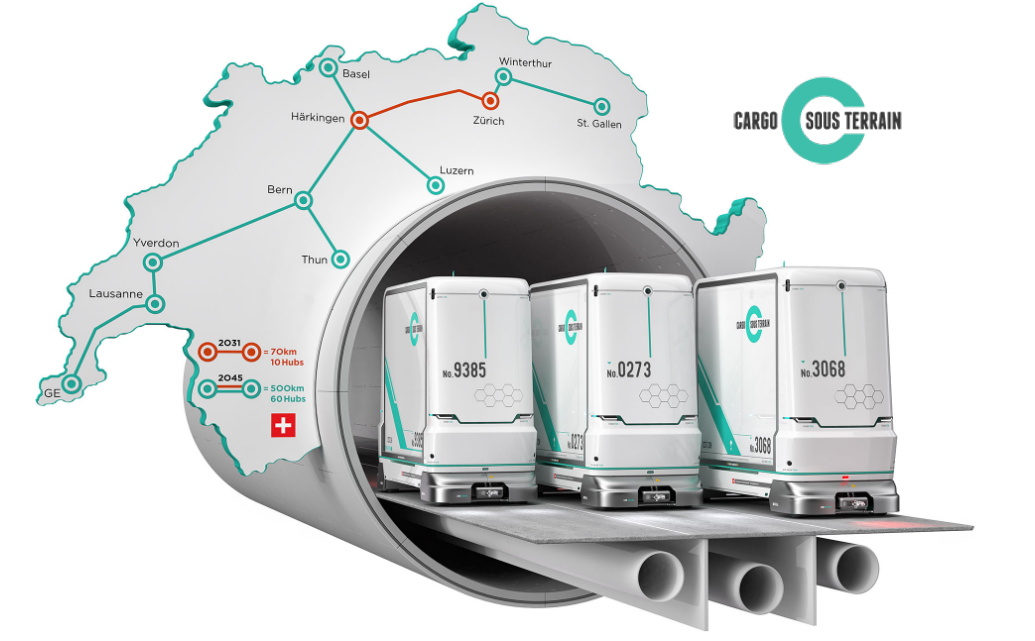
Image: CST
In a [under]groundbreaking move towards sustainable and efficient freight transportation, Switzerland’s ambitious Cargo sous terrain (CST) project is slowly picking up speed. After patiently navigating legislative hurdles, the project is making tangible progress, with the first series of tunnels set to be operational by 2031.
The inception of the underground freight system dates back to 2013 when Cargo sous terrain (CST) proposed a revolutionary concept. However, it took eight years for the Swiss parliament to greenlight new construction legislation, which only came into effect in August 2022.
This year marked a turning point as CST launched exploratory drilling and geological measurements for the initial stretch of tunnels between Zurich and Härkingen in canton Solothurn. While engaging in consultations with local communities, CST still awaits planning permissions from various cantons.The CST Vision Unveiled

The Härkingen-Zurich line is a crucial segment of the envisioned 500km-long tunnel network, spanning from Geneva to St Gallen, delving to depths of 40 meters. Electrically powered self-driving pods, cruising at a consistent 30km/hour and capable of transporting two pallets each, will efficiently ferry goods between network hubs.
The colossal project comes with an estimated price tag of CHF30-35 billion ($33-39 billion), entirely funded by the private sector. CST claims to have secured CHF100 million for the initial phase, with the Härkingen-Zurich line alone expected to cost around CHF3.4 billion. Notably, the legislation shields the federal government from any financial liability.Challenges and Confidence

However, concerns linger about the private sector’s ability to secure such substantial funding, especially in a fluctuating economic landscape. The project’s approval during a period of negative interest rates raises questions about its resilience against potential economic shifts.
CST remains optimistic, aiming to have the 70-km stretch between Härkingen and Zurich operational by 2031. Comparisons to the Lötschberg Base Tunnel, which took eight years to build, are made, with CST anticipating a quicker timeline due to the relatively flat terrain.
This year, CST unveiled a prototype for a “vertical lifter,” a unique device facilitating pod movement between hubs and tunnels, highlighting the project’s innovative approach.

Environmental Impact and Global Interest
The CST project aligns with the broader goal of reducing freight traffic on Swiss roads, addressing the projected 30% increase in road cargo transport by 2040. An environmental impact assessment by CST suggests that the underground system could significantly alleviate traffic congestion, road accidents, and carbon emissions.
Global interest in underground transport is evident, with Japan, Germany, the Netherlands, and China exploring similar projects. CST’s potential to reduce traffic and pollution is recognized internationally, though the project’s ability to stay within budget and fulfill its environmental promises remains to be seen.
In a world grappling with congested highways, the Swiss underground cargo system represents a bold step towards a more sustainable and efficient future in freight transportation.
Source: swissinfo / CST
